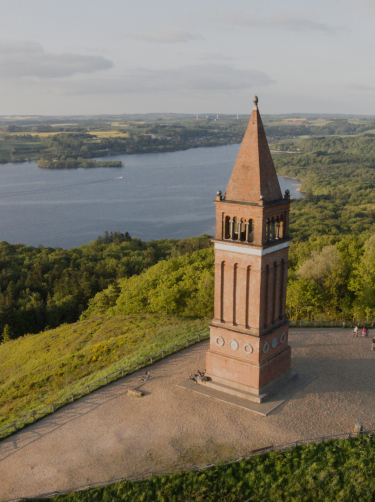

Memorials
The Blicher Stone
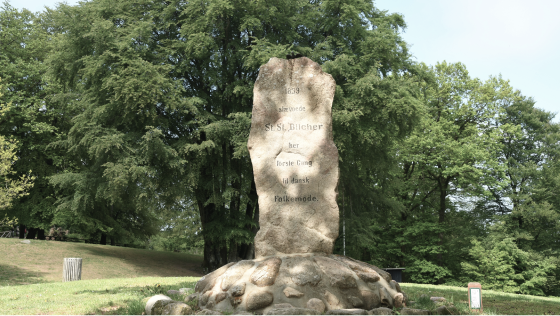

The Blicher Stone
The Natural Stone, topped with St. St. Blicher’s favourite symbol, the moor larch sitting proudly on top, was erected on 11 October 1882 on Blicher’s 100-year birthday, and the inscription reads:
At this location, in 1839, St. St. Blicher for the first time rallied to the National Danish Peoples’ assembly.
The Tscherning Stone
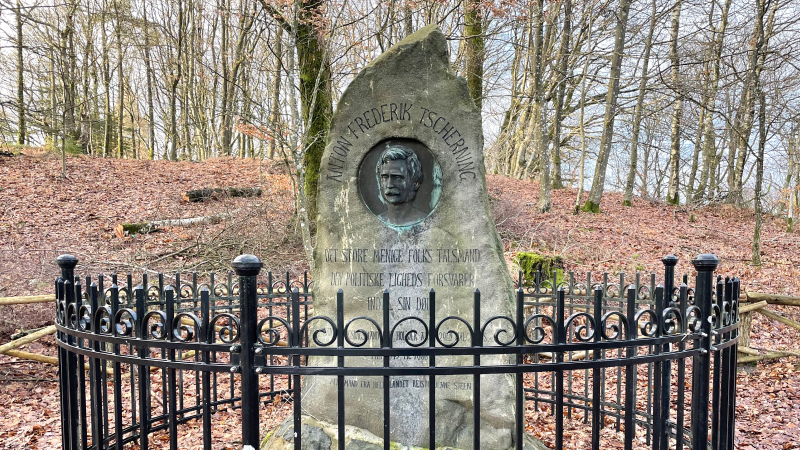

The Tscherning Stone
A. F. Tscherning (1795-1874), an officer and Chairman of The Farmers’ Friends, had great sympathy for the equality of the peasantry compared to other groups of the society. Just like Blicher, he was a sworn fan of the general conscription and the inscription reads:
Anton Frederik Tscherning. The Great Spokesman of the Common People – defender of the Political Equality until his death. This stone was erected by Common man from all over the country.
H.C. Andersen’s Bench
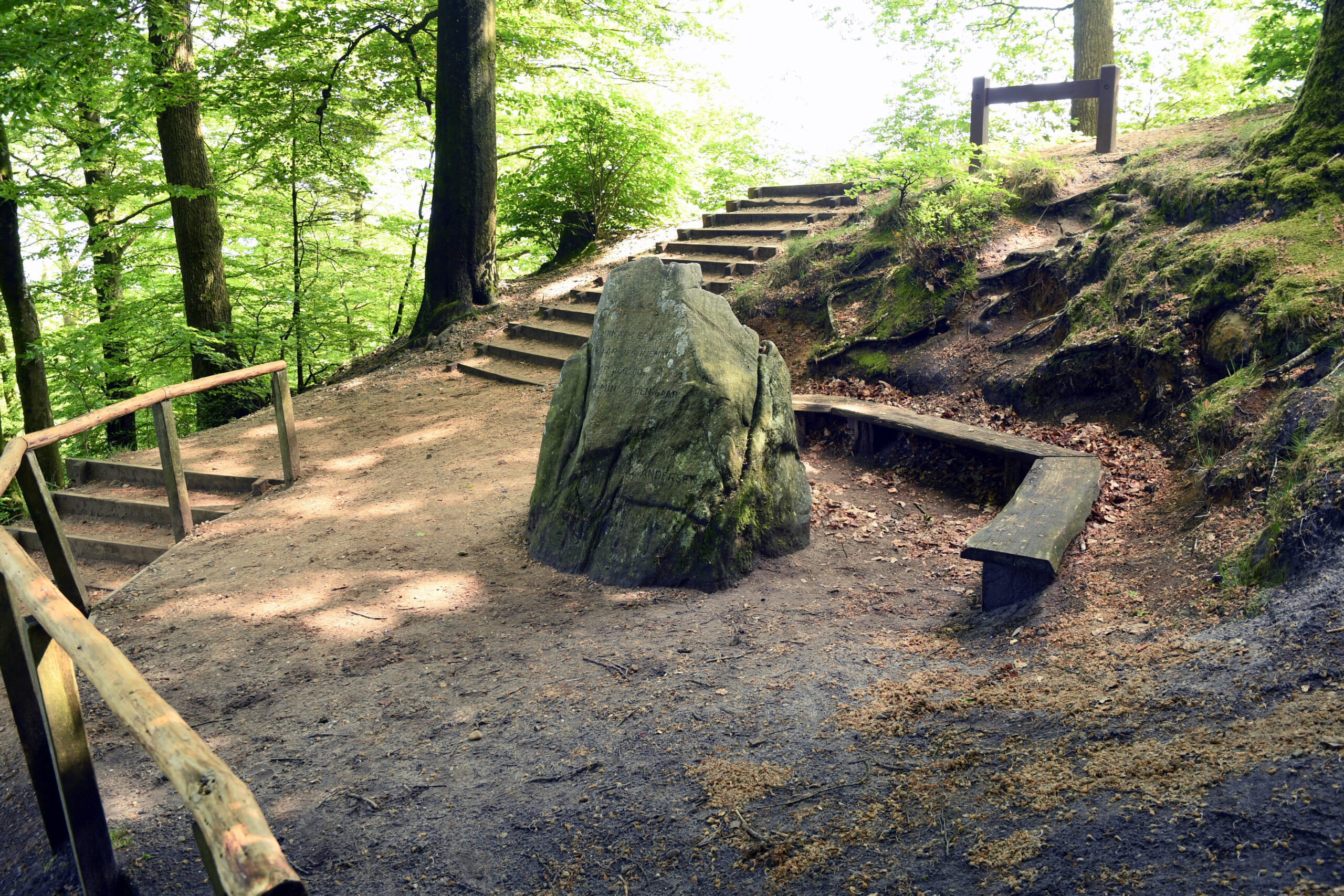

H.C. Andersen’s Bench
Today, a bench dedicated to the poet H. C. Andersen has been built on Himmelbjerget. Next to the bench is a stone with an inscription of the two first lines of the hymn ”I Danmark er jeg født” (In Denmark, I was born), written by af H. C. Andersen in 1850:
I Danmark er jeg født, der har jeg hjemme,
der har jeg rod, derfra min verden gaar.
(Eng. In Denmark, I was born, the land my soul calls home,
There my roots rest, from there my world sets out)
H.C. Andersen (1805-1875) travelled a lot both abroad and in Denmark, where he frequently lodged privately. In the period from 1850 to 1859, he visited the Drewsen family in Silkeborg five times, where Michael Drewsen had founded the local Silkeborg Paper factory.
In his diaries, H. C. Andersens wrote about several trips to the areas surrounding Silkeborg – among others to Aasen and Himmelbjerget.
On Thursday 30 May 1850, he wrote: ”Drove with Drevsen to Aasen … on the foremost Spot, I chose my Seat, here seems quite Scottish; with a view of the Gudenaa; all the way up under the Himmelbjerg and back down to Silkeborg, I was asked to name a place in my name and asked for this height where a bench stood, which is now called »Andersens Høiland” (Andersen’s highland). During the trips with Drewsen, H. C. Andersen was inspired to the tale of ”Ib og lille Christine” (Ib and little Christine) from 1855. It is the tale of the wooden shoemaker’s son, Ib, from the area near Aasen, who meets the daughter of the barge hauler’s, Christine, from Sejs Moor.
The Vilhelm Beck Stone
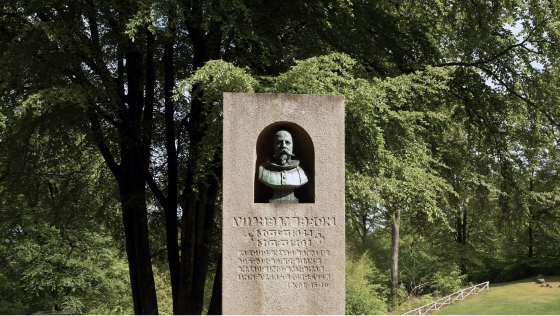

The Vilhelm Beck Stone
Vilhelm Beck (1829-1901) was the Chairman of the Inner Mission from 1881 to 1901. Beck was frequently the keynote speaker during Inner Missions rallies on Himmelbjerget. The stone was revealed in 1929 and the inscription reads:
Vilhelm Beck * 30/12 1829 + 30/9 1901. By the grace of God, I am what I am, and his grace to me has not been in vain. 1. Cor. 15, 10.
The Leopold Budde Stone
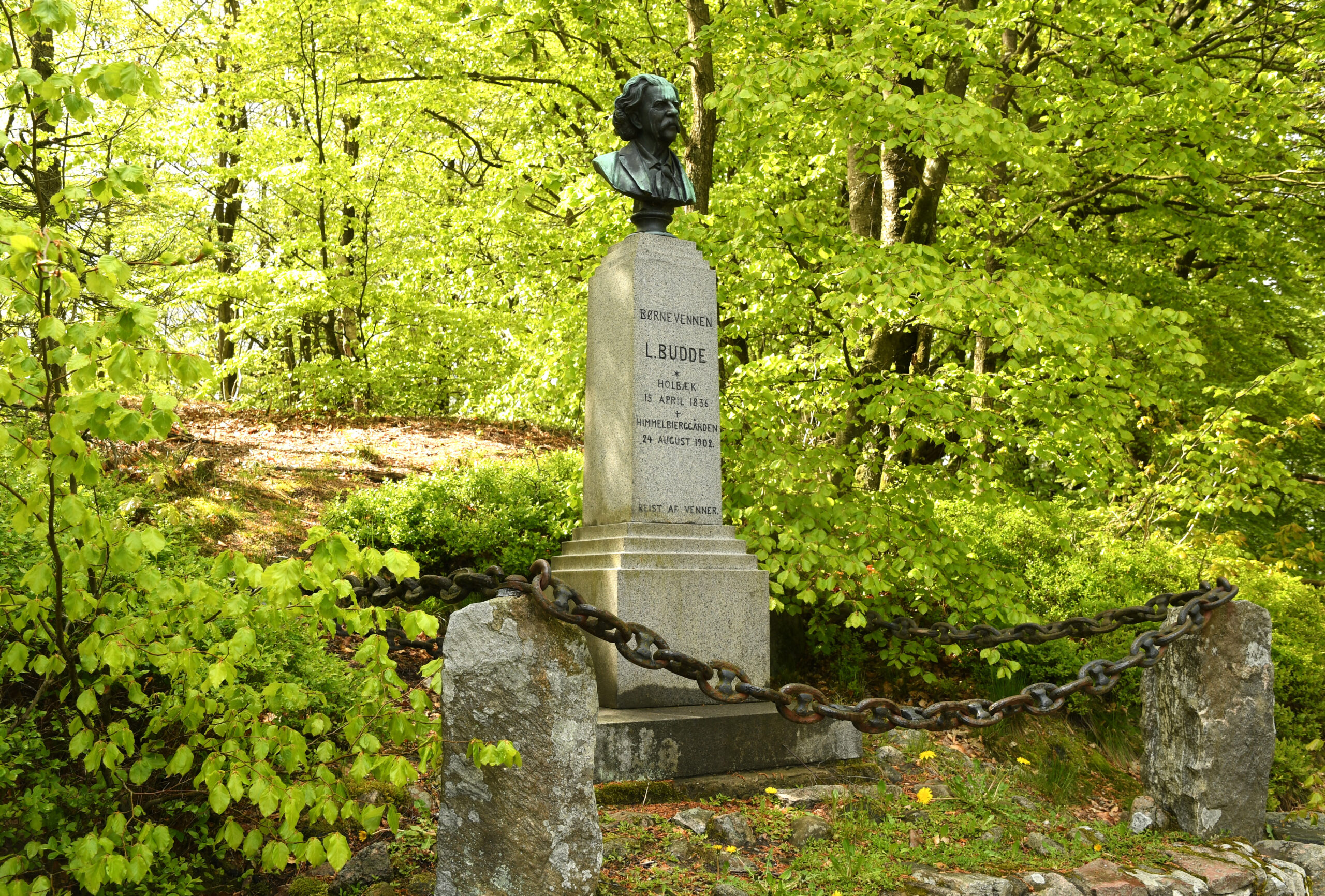

The Leopold Budde Stone
Leopold Budde (1836-1902) founded the orphanage Himmelbjerggården (The Sky Mountain Farm) in 1897. He was a contemporary teacher who thought children should be raised with love rather than discipline. Additionally, Budde was a fiction author. The stone was created by the sculptor Rasmus Bøgebjerg and erected in 1905. The inscription reads:
The children’s friend L. Budde, * Holbæk 15. April 1836, + Himmelbjerggården 24. Aug. 1902. Raised by Friends.
The Woman’s Oak
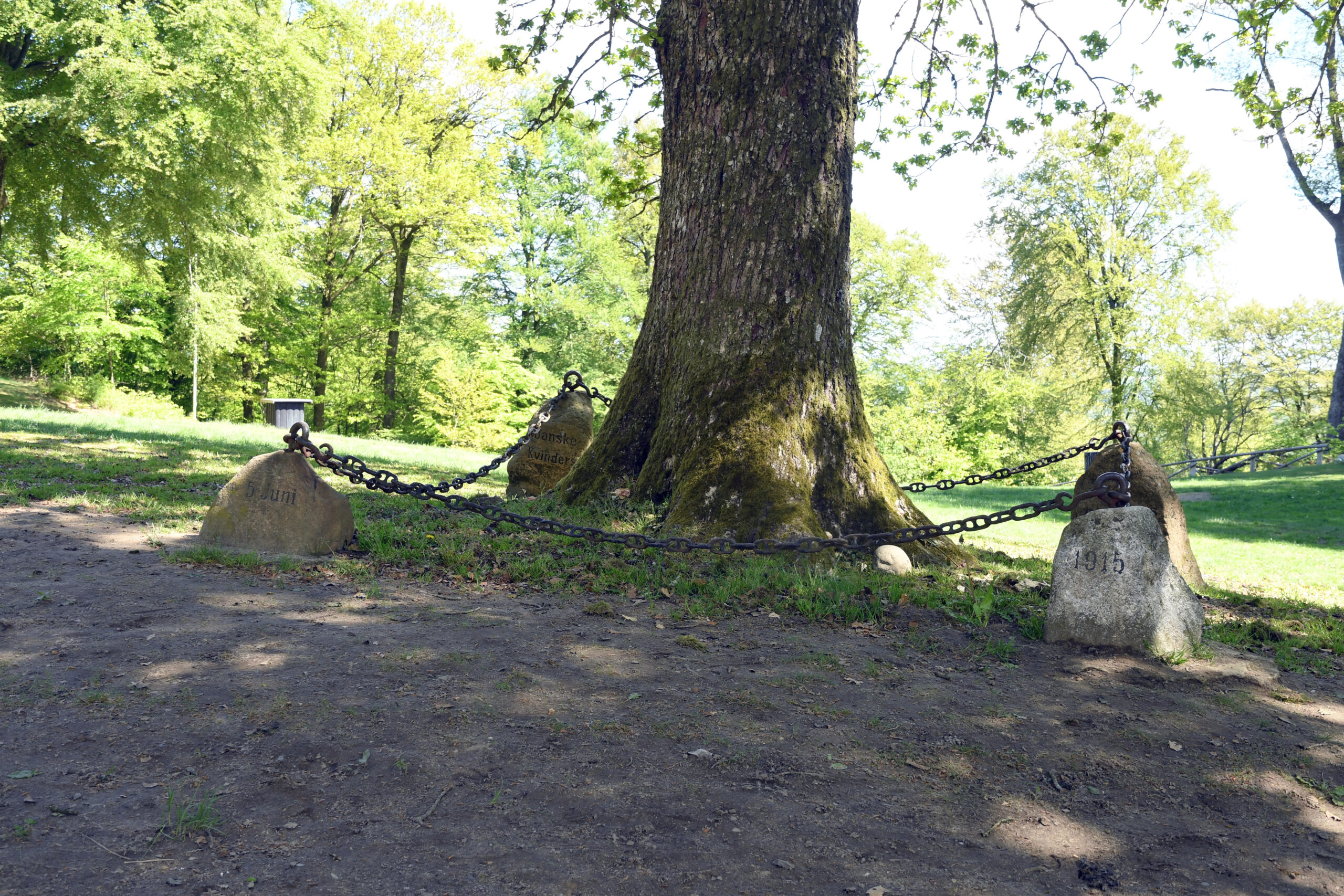

The Woman’s Oak
The Oak was planted during a large Constitution Day rally 6 June 1915, the day after the adoption of the new Constitution of 5 June 1915, which gave suffrage to women and domestic servants.
The Woman’s Stone or the Queens’ Stone
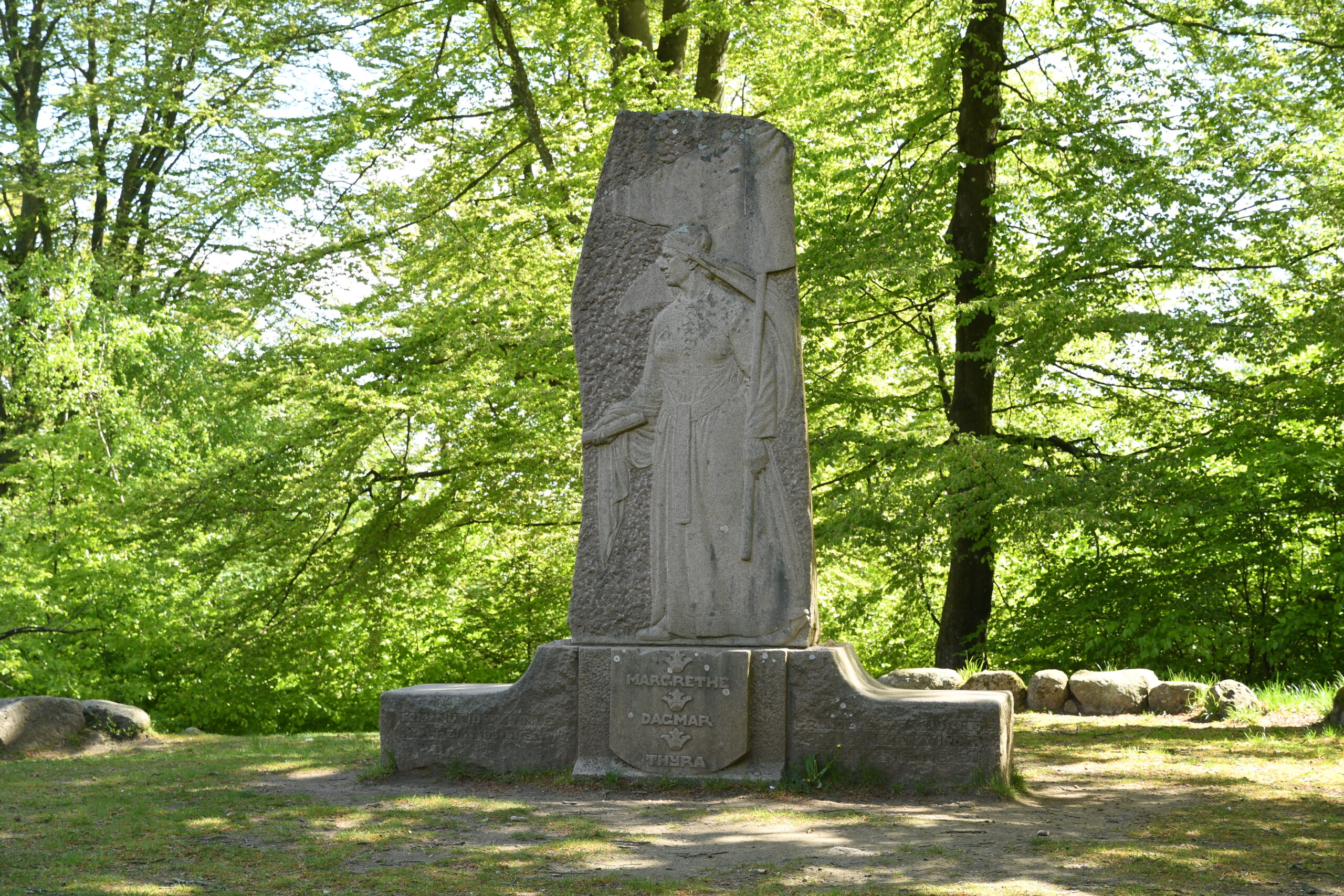

The Woman’s Stone or the Queens’ Stone
The Woman’s Stone in memory of the women’s suffrage in 1915 was created by the sculptor Elias Ølsgaard and revealed in 1921. On the huge stone, a figurine is carved, symbolizing the Danish Woman. Additionally, the names of three Danish queens have been carved in the foot of the stone, namely Margrethe 1., Dagmar and Thyra. The inscription reads:
As contemporary women – thus also all future breeds – the Constitution of 1915 gave Danish women the political right to Vote.
The lectern
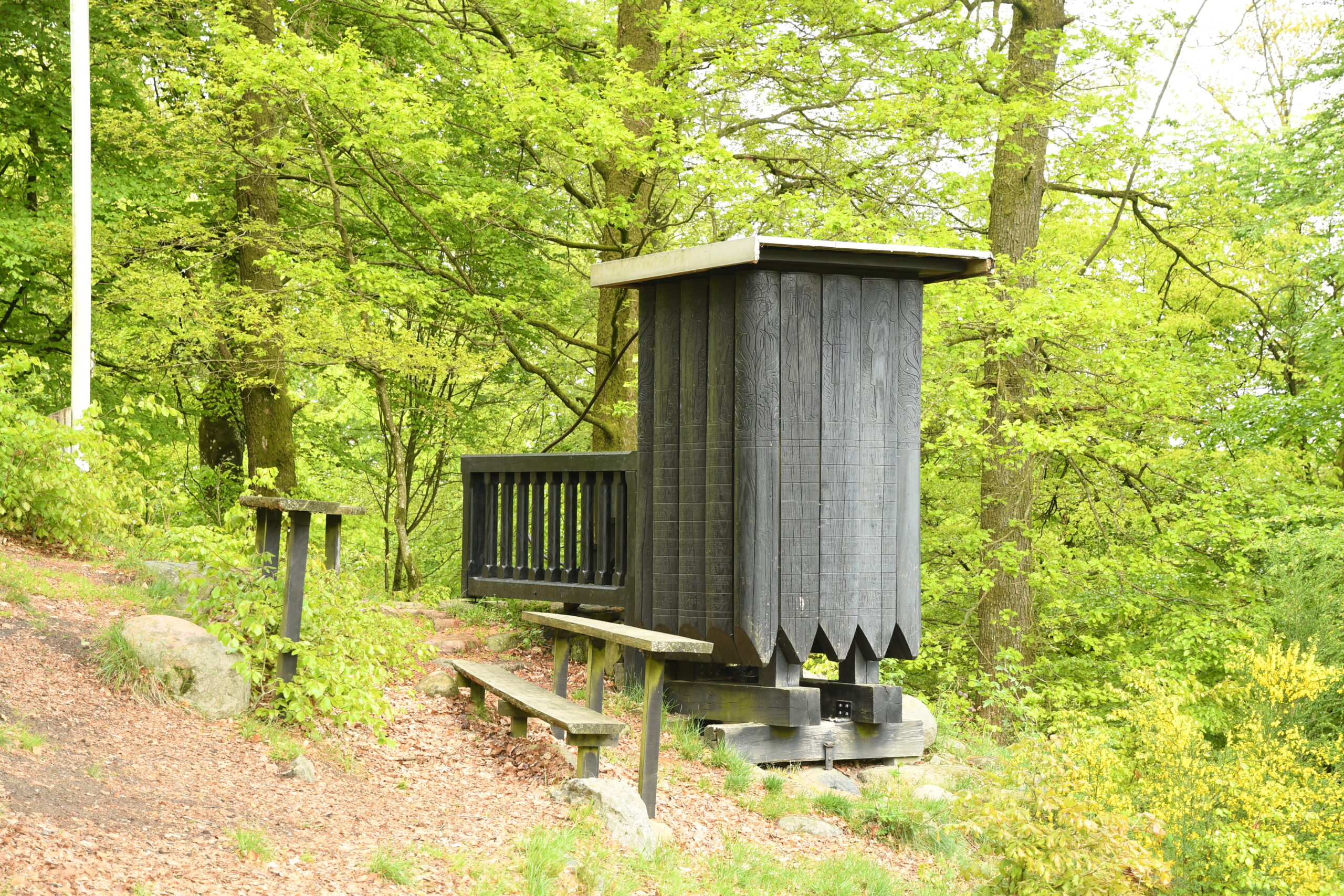

The lectern
In 1925, Anton Rosen’s lectern was raised with carved portraits of the nine men who had been most significant to the Himmelbjerg rallies. Additionally, the names of numerous later keynote speakers have been added to the lectern.
The sculpture Spirit and Letter
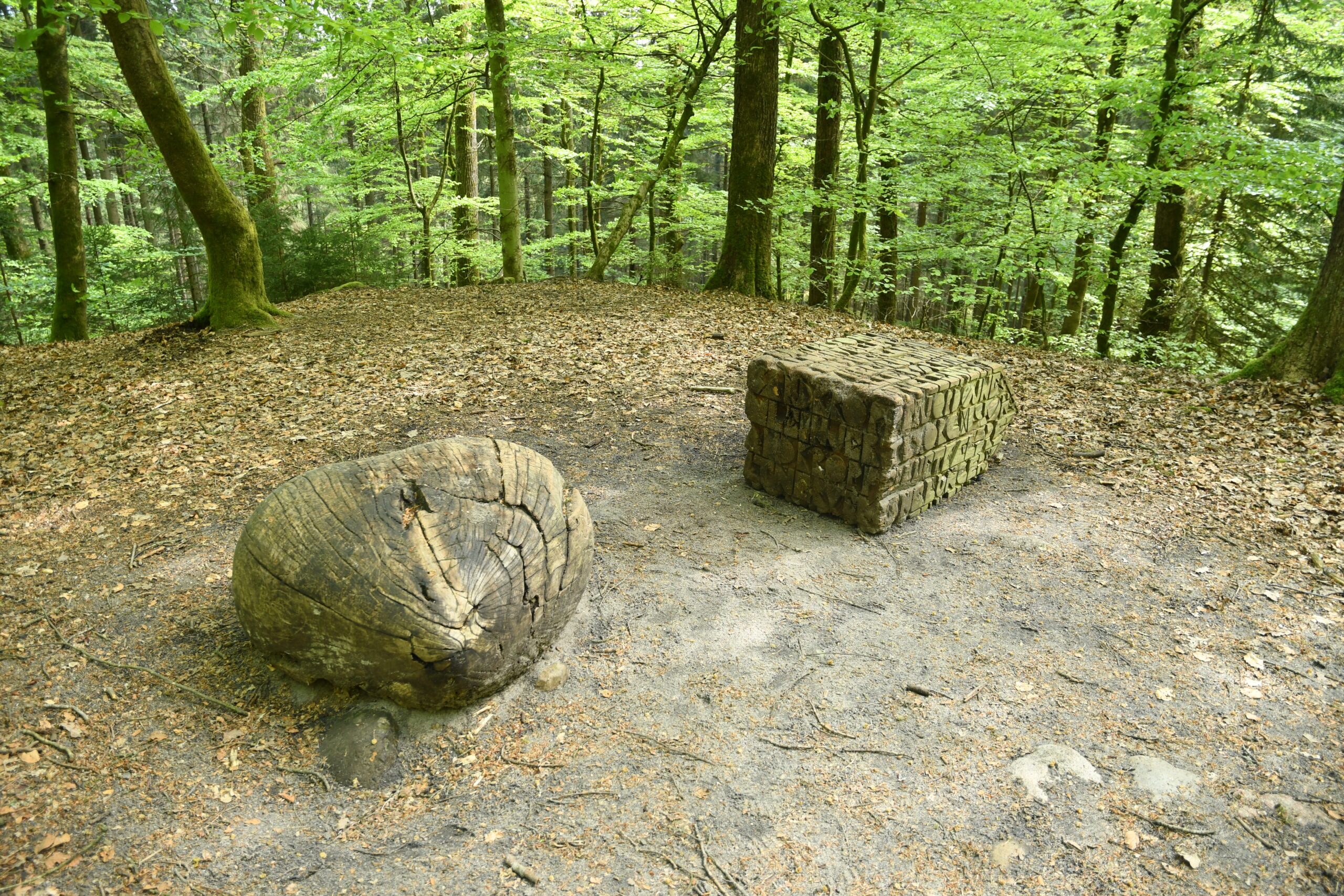

The sculpture Spirit and Letter
In 1999, in celebration of the 150-year anniversary of the constitution, the sculptor Jørn Rønnau created a work of art, made of oak and elm tree; a wood house and a heart, symbolizing the Constitution, the Community, and love.
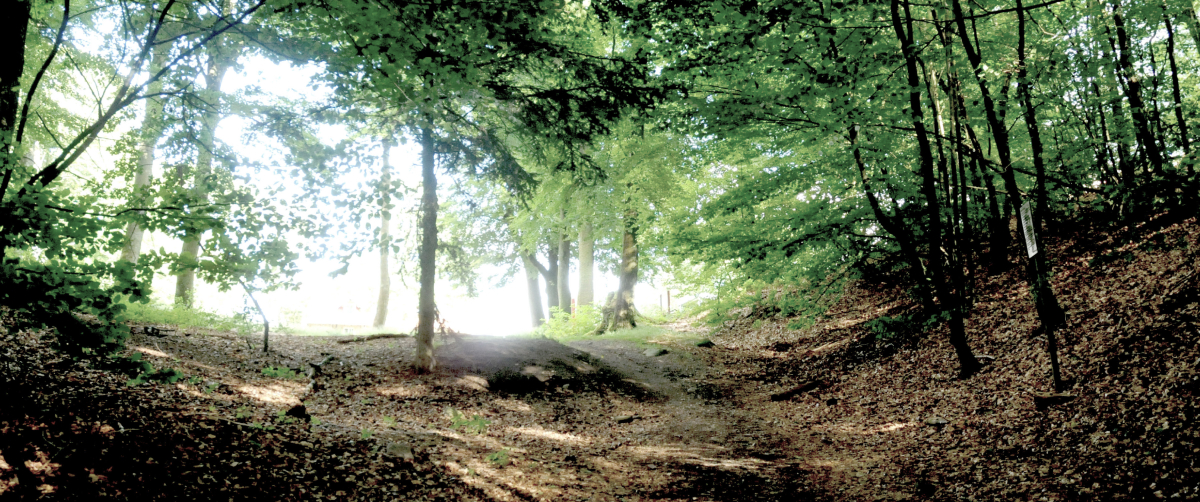

Beautiful wandering and cycling routes
There are several possibilities of getting around in the surrounding lands of Himmelbjerget, both on foot and bicycle. For instance, you may follow the 40 km long Himmelbjerg route around the Himmelbjerg lakes, from a starting point on Himmelbjerget. But there are many other marked routes in the beautiful landscape in Søhøjlandet.